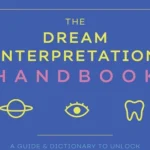Do your dreams leave you feeling puzzled and curious about their hidden meanings? Unlock the Meaning of Your Dreams: A Comprehensive Guide to Reading Dreams is your ultimate resource for unraveling the mysterious world of dreams. This in-depth guide will take you on a journey through different types of dreams, common dream symbols, and recurring themes. You’ll discover how to interpret your dreams by keeping a dream journal, analyzing symbols, and exploring personal associations. The article also delves into popular dream meanings, common dream scenarios, and the fascinating phenomenon of lucid dreaming. Additionally, you’ll gain insights into nightmares and night terrors, the psychological theories behind dreaming, and the various interpretation tools available, such as dream dictionaries, tarot reading, and astrology. Explore the cultural and historical contexts of dreams and learn how they can contribute to personal growth, self-reflection, and creative inspiration. Get ready to unlock the secrets of your dreams and embark on a captivating journey of self-discovery.
Understanding Dreams

Dreams have long fascinated and perplexed humans, offering glimpses into the depths of our subconscious minds. Understanding dreams is the first step toward unlocking their hidden significance. Types of Dreams vary widely, from lucid dreams where one has control over the dream narrative to vivid and emotional nightmares that can leave us shaken. Exploring the Common Dream Symbols can provide valuable insights into our deepest fears, desires, and emotions. Whether it’s flying dreams that symbolize freedom and empowerment or being chased dreams that reflect unresolved conflicts and anxieties, each symbol carries a unique meaning. Recognizing Dream Themes and Patterns is also essential in deciphering the messages within our dreams. These recurring patterns can shed light on recurring challenges or themes in our waking lives. By delving into the diverse aspects of dreams, their meanings become clearer, and we gain a deeper understanding of ourselves and our experiences.
Types of Dreams
- Lucid Dreams: Lucid dreams are characterized by the dreamer being aware that they are dreaming. This type of dream allows individuals to have some level of control and influence over the dream narrative, leading to exciting and empowering experiences.
- Nightmares: Nightmares are intense and distressing dreams that often evoke fear, anxiety, or terror. These dreams can be caused by various factors such as stress, trauma, or unresolved emotions, and they may serve as a way for the mind to process and release negative emotions.
- Recurring Dreams: Recurring dreams are dreams that repeat themselves over an extended period. These dreams often revolve around specific themes, scenarios, or emotions, and they may indicate unresolved issues or patterns in the dreamer’s life.
- Prophetic Dreams: Prophetic dreams are dreams that seem to foresee or predict future events. While controversial, many individuals believe that these dreams can provide glimpses into the future or offer intuitive insights.
Common Dream Symbols
Common dream symbols offer valuable insights into the hidden messages within our dreams. These symbols act as a bridge between our unconscious mind and the conscious world. Flying dreams symbolize freedom, ambition, and the ability to rise above challenges. Being chased in a dream often signifies feeling pursued or overwhelmed by a situation in our waking life. Falling dreams can represent a loss of control, fear of failure, or the need to let go of something. It’s crucial to understand that the interpretation of these symbols can vary for each individual based on personal experiences and emotions. By recognizing and analyzing these symbols, we begin to unravel the deeper meanings behind our dreams and gain valuable insights into our subconscious thoughts and feelings. If you’re intrigued by dream symbols, you may also be interested in learning more about roach dreams and their symbolic significance.
Dream Themes and Patterns
Understanding the that emerge in our dreams can provide valuable insights into our subconscious minds. These recurring themes often reflect deeper emotions, fears, and desires that we may not be fully aware of in our waking lives. Some common dream themes include falling, being chased, or being naked in public, each carrying its own symbolic meaning. By identifying these themes and patterns, we can start to unravel the underlying messages and gain a deeper understanding of ourselves. For example, frequent dreams of falling may indicate a fear of losing control or a lack of stability in our waking lives. Exploring and analyzing these themes can lead to personal growth and self-discovery.
Interpreting Dreams
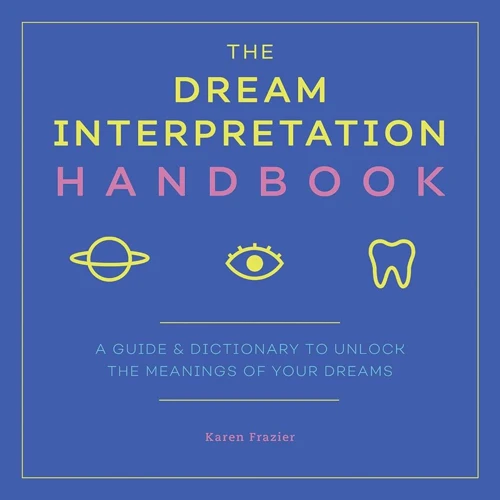
Once you’ve started to grasp the basics of dreams, the next step is . One effective approach is to Keep a Dream Journal, where you record your dreams immediately upon waking. This helps to capture the vivid details and emotions that may fade as the day progresses. By analyzing Dream Symbols, you can uncover the hidden messages and meanings behind them. For example, dreaming of ravens can signify transformation or a need for introspection, while running dreams may indicate a desire for escape or a need to overcome obstacles. Understanding personal associations is crucial in dream interpretation as well. What do certain symbols or scenarios mean to you personally? By exploring your own unique experiences and emotions, you can decipher the messages your dreams are trying to convey. Remember, dream interpretation is a deeply personal and subjective process. What holds significance for one person may differ for another. Embrace the journey of uncovering the meanings behind your dreams and use them as a tool for self-discovery and personal growth.
Keeping a Dream Journal
Keeping a Dream Journal is a powerful tool for unlocking the meaning of your dreams. By recording your dreams immediately upon waking, you capture the details and emotions while they are still fresh in your mind. This practice helps you notice patterns, recurring symbols, and themes that may emerge over time. It is important to include as much detail as possible, such as colors, people, locations, and any significant events or feelings. By looking back at your dream journal, you can start to see connections between your dreams and your waking life, allowing for deeper introspection and self-discovery. Dreaming of ravens or running dreams may have particular significance for you, and by documenting these dreams, you can gain a clearer understanding of their personal meaning.
Analyzing Dream Symbols
Analyzing dream symbols is a crucial aspect of unlocking the meaning behind our dreams. Each symbol holds a unique significance, and by examining them closely, we can gain valuable insights into our subconscious thoughts and emotions. To analyze dream symbols effectively, it’s essential to take note of the specific objects, people, or events that appear in the dream. Consider the emotions and sensations associated with these symbols, as well as any personal connections or memories they may evoke. By exploring the possible interpretations and associations of these symbols, we can unravel the hidden messages and deeper meanings within our dreams. Whether it’s deciphering the significance of a raven in a dream or examining the symbolism of running or encountering roaches, every symbol is a doorway to self-discovery and understanding.
Exploring Personal Associations
Exploring personal associations is key to unlocking the true meaning behind our dreams. As we analyze the symbols and themes present in our dreams, we must delve into our own personal experiences, beliefs, and emotions. Personal associations refer to the unique and individual connections we have to specific symbols or themes within our dreams. For example, while a dream about a raven may have a general symbolic meaning, our personal association with ravens may differ based on our own experiences or cultural influences. By reflecting on these personal associations, we can gain deeper insights into our dreams and their significance to our lives. It is through this exploration that we uncover the intricacies of our subconscious mind and unravel the messages our dreams are trying to convey.
Popular Dream Meanings
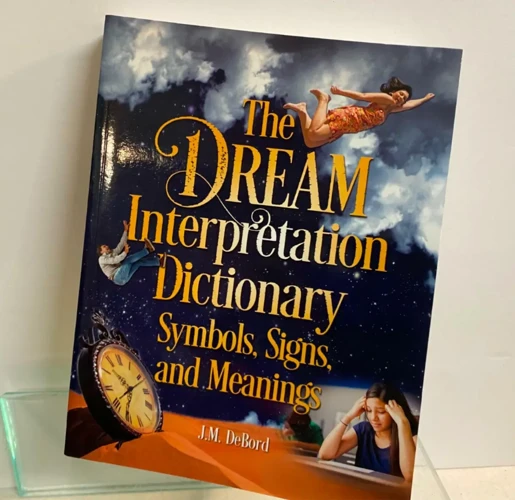
Dreams often hold symbolic meanings that can provide insight into our subconscious thoughts and emotions. encompass a range of experiences that many people can relate to. Flying dreams, for example, are often associated with a sense of freedom, liberation, and the desire to escape from the constraints of everyday life. In contrast, being chased dreams can represent feelings of anxiety, pressure, or unresolved issues that are chasing us in our waking lives. Falling dreams may indicate a loss of control, insecurities, or a fear of failure. These interpretations, however, can vary depending on the individual and their personal associations with these symbols. Exploring the underlying emotions and situations connected to these popular dream themes can offer valuable insights into our subconscious mind and help us navigate our waking lives with a greater understanding of ourselves.
Flying Dreams
– Flying dreams are a common and exhilarating dream experience.
– These dreams often signify a sense of freedom, empowerment, and transcendence.
– They can symbolize personal growth, ambition, and the ability to rise above challenges.
– Flying dreams may also represent a desire to escape or break free from limitations and constraints in waking life.
– The experience of flying in dreams can evoke feelings of joy, liberation, and a sense of being in control.
– It is important to take note of the details in the dream, such as the scenery and the emotions felt while flying, as they can provide additional insights into the dream’s meaning.
– Some individuals enjoy recurring flying dreams, which can indicate a strong sense of personal power and confidence.
– Exploring the symbolism and personal associations related to flying dreams can offer valuable insights and guidance for self-reflection and personal growth.
Being Chased Dreams
Being chased dreams are incredibly common and can often leave us feeling on edge and fearful even after waking up. In these dreams, the feeling of pursuit can be overwhelmingly intense, and it’s important to explore the symbolism behind them. Being chased dreams typically represent our attempts to avoid or escape from something in our waking lives. It could be a challenging situation, a difficult decision, or unresolved emotions. The pursuer in the dream may symbolize the pressure, responsibilities, or fears that we are trying to evade. It’s crucial to pay attention to who or what is chasing us, as this can provide valuable insights into the specific aspect of our lives that we are trying to avoid confronting. By analyzing the details of the dream, such as the environment, our emotions, and any actions taken during the chase, we can start unraveling the deeper meaning and gain clarity on how to address these challenges in our waking lives.
Falling Dreams
Falling dreams are a common dream theme that can evoke a sense of unease and vulnerability. These dreams often occur when we feel overwhelmed or lack control in our waking lives. While falling dreams may initially be interpreted as a negative omen, they can also symbolize personal growth and the need to let go of old patterns or beliefs. The sensation of falling can represent a fear of failure or the need to release control and trust the process of life. Each person’s experience of falling dreams may vary, so it’s important to analyze the personal associations and emotions tied to these dreams for a more personalized interpretation.
Common Dream Scenarios
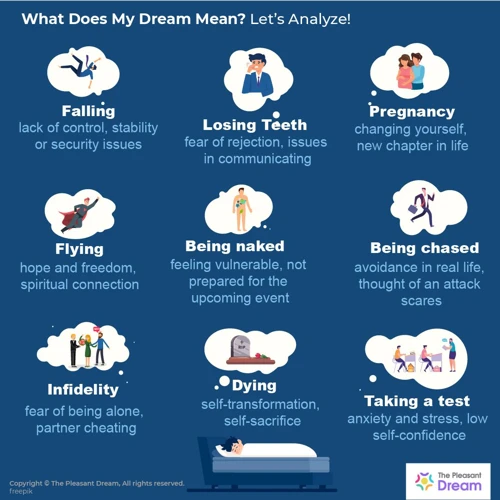
In the realm of dreams, certain scenarios tend to occur frequently, leaving dreamers bewildered and curious about their significance. can provide valuable insights into our subconscious thoughts and emotions. One such scenario is the unsettling experience of Being Naked in Public. This dream often represents vulnerability, insecurity, or a fear of being exposed and judged. Another common dream scenario is Teeth Falling Out, which can symbolize personal insecurities, the fear of aging, or communication issues. Additionally, the frustration of Lost or Forgotten Items in dreams can reflect feelings of loss, disorganization, or the fear of missing out. These dream scenarios may manifest differently for each individual, but by exploring their possible interpretations and personal associations, we can unravel the mysterious messages our dreams convey.
Being Naked in Public
When it comes to dreams about being naked in public, they often evoke feelings of vulnerability and embarrassment. This common dream scenario can reflect a fear of being exposed or judged by others. The interpretation of this dream can vary depending on the individual and their personal experiences. Some possible meanings behind this dream include feelings of insecurity or a fear of being judged for one’s true self. It could also signify a desire for freedom and authenticity, as being naked represents a state of vulnerability and openness. Alternatively, the dream may symbolize a need for acceptance and self-acceptance, encouraging the dreamer to embrace their true self without fear of judgment. Dreams about being naked in public can provide valuable insights into one’s self-esteem, confidence, and fear of judgment from others.
Teeth Falling Out
– Anxiety and Insecurity: One common interpretation of dreams about teeth falling out is that they represent anxiety and insecurity. These dreams often occur during times of stress or when we are feeling uncertain about a particular aspect of our lives. They may indicate a fear of being judged or a lack of confidence in our abilities.
– Communication and Self-Expression: Another interpretation suggests that dreams about teeth falling out could be related to issues with communication and self-expression. Losing teeth can make it difficult to speak clearly, so this dream may symbolize a struggle to convey our thoughts and feelings effectively.
– Aging and Mortality: Teeth falling out dreams can also be associated with the fear of aging and mortality. Losing teeth is often associated with the natural process of aging, so these dreams may reflect our concerns about getting older or our mortality in general.
– Personal Power and Control: In some cases, dreams about teeth falling out may be linked to a loss of personal power or control in our lives. Losing teeth can symbolize a loss of confidence or a feeling of powerlessness in certain situations.
– Transition and Transformation: Alternatively, dreams about teeth falling out can represent a transition or a period of personal transformation. Just as losing baby teeth is a normal part of growing up, these dreams may indicate our readiness to let go of old beliefs or habits and embrace change.
Understanding the specific context and emotions within the dream can help provide additional insights into the meaning of teeth falling out dreams. It is always important to consider individual experiences and interpretations when analyzing dream symbols.
Lost or Forgotten Items
Losing or forgetting items in dreams can provoke feelings of frustration, confusion, and even anxiety. This common dream scenario often symbolizes a sense of loss, disorientation, or a fear of losing something important in our waking lives. It may indicate a fear of losing control, forgetting important commitments, or feeling overwhelmed by responsibilities. Exploring the specific items that are lost or forgotten in the dream can provide further insights into the areas of our lives where we feel lacking or uncertain. By paying attention to this recurring theme, we can uncover underlying emotions and address any unresolved issues or fears that may be contributing to the dream.
Lucid Dreaming

Have you ever wished you could take control of your dreams and become an active participant in your own subconscious realm? offers exactly that opportunity. This phenomenon occurs when a dreamer becomes aware that they are dreaming and can actively influence and shape the dream narrative. What is Lucid Dreaming? It is a state where the boundaries between reality and dreams blur, granting individuals the ability to manipulate their dream environment, interact with dream characters, and even explore fantastical landscapes. While some experience spontaneous lucid dreams, there are Techniques for Lucid Dreaming that can be practiced to increase the frequency of such dreams. These techniques include reality checks, setting dream intentions, and maintaining a dream journal. The Benefits of Lucid Dreaming are vast and intriguing, ranging from overcoming fears and anxieties to improving creativity and problem-solving skills. Lucid dreaming opens up a world of possibilities, blurring the lines between imagination and reality, and allowing individuals to tap into the immense potential of their dreaming mind.
What is Lucid Dreaming?
Lucid dreaming is a fascinating phenomenon where the dreamer becomes aware that they are dreaming while still in the midst of the dream. This heightened state of consciousness allows individuals to actively participate and manipulate the dream narrative. In a lucid dream, one can defy the laws of physics, explore fantastical landscapes, and interact with dream characters. This awareness opens up a world of endless possibilities, where one’s imagination and desires can take center stage. Whether it’s soaring through the skies, exploring uncharted territories, or reliving cherished memories, lucid dreaming offers a playground for the mind. During a lucid dream, the dreamer can maintain cognitive functions and make deliberate choices, blurring the line between reality and the dream world. It is a truly surreal experience that can be both thrilling and enlightening.
Techniques for Lucid Dreaming
To experience the fascinating phenomenon of lucid dreaming, there are various techniques that can be employed. One effective technique is Reality Testing, which involves regularly questioning whether one is dreaming or awake throughout the day. Another technique is Mnemonic Induction of Lucid Dreams (MILD), where individuals repeat a phrase like “I will have a lucid dream tonight” before falling asleep. Wake-Back-to-Bed (WBTB) is a technique where one wakes up in the middle of the night, stays awake for a short period, and then goes back to sleep, increasing the likelihood of lucid dreaming. Other techniques include Wake-Induced Lucid Dreaming (WILD) and Visualization. Trying out these techniques can enhance the chances of having lucid dreams, allowing individuals to actively participate and control their dream experiences.
Benefits of Lucid Dreaming
Lucid dreaming offers a range of benefits that can enhance our well-being and personal growth. One of the main advantages is the ability to consciously control and shape the dream experience, allowing us to overcome fears, practice new skills, and explore our creativity. Lucid dreaming can also have therapeutic effects, helping individuals overcome nightmares, trauma, and anxiety. Additionally, it can provide a platform for self-reflection and problem-solving, as we can confront and address unresolved issues within the safety of the dream world. The benefits of lucid dreaming extend beyond the realm of dreams, impacting our waking life by increasing self-awareness, promoting better sleep quality, and boosting overall mental well-being. By harnessing the power of lucid dreaming, we can tap into our subconscious and unlock a wealth of transformative possibilities.
Nightmares and Night Terrors
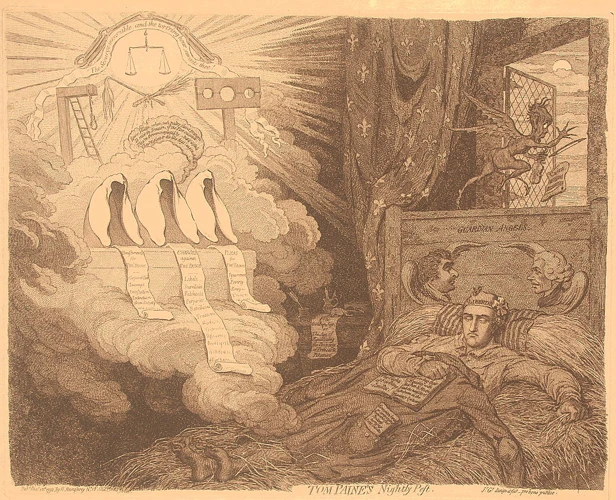
Nightmares and night terrors are unsettling and distressing experiences that can disrupt our sleep and leave us feeling overwhelmed. Understanding Nightmares involves recognizing the intense emotions and vivid imagery that often accompany these dreams. Nightmares can be triggered by various factors, such as trauma, stress, or underlying psychological issues. Dealing with night terrors requires a compassionate approach, acknowledging the impact they have on our well-being and seeking appropriate support or therapy if necessary. Preventing Nightmares involves creating a peaceful sleep environment, practicing relaxation techniques before bed, and addressing any underlying psychological or emotional issues. By understanding the nature of nightmares and night terrors and taking steps to address them, we can work towards achieving more restful and peaceful nights of sleep.
Understanding Nightmares
Nightmares can be unsettling and leave us feeling disturbed even after we wake up. Understanding Nightmares is crucial to effectively dealing with them. They often stem from deep-seated fears, anxieties, or unresolved traumas. Nightmares can manifest as vivid and terrifying scenarios that evoke intense emotions. The key to understanding nightmares lies in recognizing the symbolism and underlying themes within them. By keeping a dream journal and analyzing the recurring symbols and patterns in our nightmares, we can gain insights into the sources of our fears and anxieties. Seeking professional help, such as therapy or counseling, can also be beneficial in addressing the root causes of recurring nightmares. Additionally, practicing relaxation techniques, maintaining a consistent sleep schedule, and creating a calm and peaceful sleep environment can help prevent nightmares and promote restful sleep. With a better understanding of nightmares, we can take steps towards managing and overcoming their impact on our well-being.
Dealing with Night Terrors
Dealing with night terrors can be a challenging and distressing experience. Night terrors are intense episodes of fear or terror that occur during sleep, often characterized by screaming, thrashing, or a sense of impending doom. When faced with night terrors, it’s important to prioritize safety by ensuring the sleep environment is free of hazards. Reassurance and comfort can go a long way in calming someone experiencing a night terror. Avoiding triggers such as sleep deprivation and highly stimulating activities before bedtime may help reduce the frequency of night terrors. If night terrors persist and significantly impact daily life, consulting a medical professional or sleep specialist may be beneficial. They can provide further guidance and strategies for managing and coping with night terrors. Remember, with proper care and support, night terrors can be effectively managed, allowing for a more restful and peaceful sleep.
Preventing Nightmares
– Establish a Relaxing Bedtime Routine: Engage in calming activities before bed, such as reading, taking a warm bath, or practicing relaxation techniques like deep breathing.
– Create a Peaceful Sleep Environment: Keep your bedroom dark, quiet, and at a comfortable temperature to promote restful sleep.
– Manage Stress: Incorporate stress-management techniques into your daily routine, such as exercise, meditation, or journaling, to reduce anxiety and prevent nightmares.
– Limit Stimulants: Avoid consuming caffeine or alcohol close to bedtime, as they can disrupt sleep patterns and increase the likelihood of nightmares.
– Address Trauma or Emotional Issues: Seek therapy or counseling if you have unresolved trauma or emotional issues contributing to recurring nightmares.
– Practice Imagery Rehearsal Therapy: Before sleep, envision a positive and peaceful outcome for any recurring nightmares, allowing your subconscious mind to create new dream scenarios.
– Maintain a Regular
Subscribe to Our Newsletter
Sign up to receive the latest news and updates.
– Avoid Late-Night Snacking: Eating heavily before bedtime can lead to indigestion, discomfort, and potentially disturbing dreams.
– Create a Soothing Nighttime Atmosphere: Incorporate relaxation techniques such as soft lighting, soothing music, or aromatherapy to promote a peaceful sleep environment.
– Consult a Medical Professional: If nightmares persist and significantly affect your daily life, consult a healthcare provider to rule out any underlying medical or mental health conditions contributing to the dreams.
Dreams and Psychology

The realm of dreams has long fascinated psychologists, who have developed various theories to explain their purpose and meaning. Sigmund Freud’s Freudian Dream Analysis suggests that dreams are a manifestation of our unconscious desires, conflicts, and repressed thoughts. According to Freud, dreams serve as a way to fulfill these hidden desires in a symbolic manner. In contrast, Carl Jung’s Jungian Dream Psychology focuses on the collective unconscious and the archetypes that emerge in dreams. Jung believed that dreams provide insights into our personal growth and evolution, connecting us to a deeper understanding of ourselves and the world around us. While these theories offer different perspectives on dream interpretation, they both emphasize the significance of dreams in uncovering aspects of our psyche that may be concealed in our waking lives. The study of dreams and psychology continues to evolve, enabling us to delve deeper into the intricacies of the human mind and gain valuable insights into ourselves.
Theories on Dreaming
– Activation-Synthesis Theory: This theory suggests that dreams are a result of random brain activity during REM sleep. According to this theory, our brain attempts to make sense of these random signals by creating dream narratives.
– Cognitive Theory: This theory posits that dreams serve a purpose in processing and organizing information. It suggests that dreams help us make sense of our daily experiences and emotions, providing a cognitive framework for problem-solving and learning.
– Psychoanalytic Theory: Developed by Sigmund Freud, this theory proposes that dreams are a reflection of unconscious desires, fears, and conflicts. Psychoanalytic theory emphasizes the interpretation of symbols and latent content in dreams to understand the deeper meaning behind them.
– Neurocognitive Theory: This theory combines aspects of both biological and cognitive perspectives. It suggests that dreams are a product of the interactions between the brain’s neural activity and our cognitive processes. Neurocognitive theory focuses on the role of memory consolidation and emotional regulation in dreaming.
– Activation-Information-Mode Model (AIM): Proposed by Jie Zhang, this theory suggests that dreaming is a result of the brain’s attempt to integrate and process both external information and internal emotional experiences. The AIM model emphasizes the role of emotional regulation and problem-solving in dreams.
These theories offer different perspectives on the purpose and function of dreams, shedding light on the complex and intriguing nature of this phenomenon.
Freudian Dream Analysis
Freudian Dream Analysis:
– Sigmund Freud, an influential figure in psychology, developed the theory of dream analysis.
– According to Freud, dreams are manifestations of unconscious desires and unresolved conflicts.
– He believed that dreams act as a way for the subconscious mind to express repressed thoughts and desires.
– Freud introduced the concept of dream symbols, suggesting that they represent hidden meanings and sexual symbolism.
– He also emphasized the importance of dream interpretation and believed that analyzing dreams could provide insights into the individual’s psyche.
– Freudian dream analysis often involves exploring the symbolic content of dreams and connecting them to personal experiences and desires.
Jungian Dream Psychology
Jungian Dream Psychology, named after the renowned Swiss psychologist Carl Jung, offers a unique perspective on dream interpretation. According to Jung, dreams provide a window into the unconscious mind and can uncover symbols and archetypes that are deeply rooted in our collective human experience. The focus of Jungian Dream Psychology is on uncovering the personal and collective unconscious elements that manifest in dreams. This approach emphasizes the exploration of dream symbols, recurring themes, and patterns to gain insights into the unconscious aspects of our psyche. By analyzing the symbolism and uncovering the hidden meanings in dreams, Jungian Dream Psychology aims to facilitate personal growth, self-discovery, and a better understanding of the human psyche.
Interpretation Tools
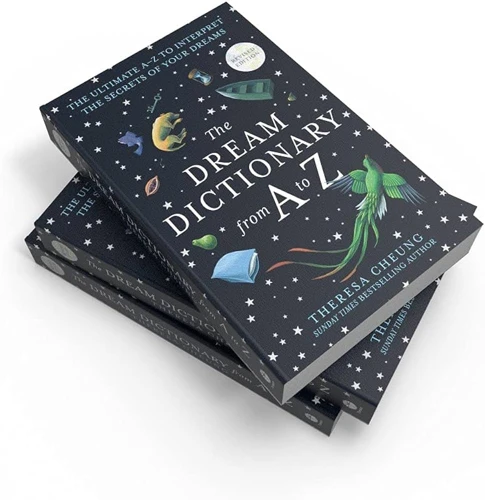
When it comes to unlocking the meaning of dreams, a variety of interpretation tools can assist us in the process. One such tool is Dream Dictionaries, which provide a comprehensive list of common symbols and their associated meanings. These dictionaries serve as a reference guide, enabling dreamers to decode the symbolism present in their dreams. Another powerful tool is Tarot Reading, which can offer deeper insights into dream symbolism through the use of tarot cards. By drawing cards related to the dream symbols, individuals can gain a clearer understanding of the messages conveyed by their dreams. Additionally, Astrology and Dream Interpretation can be intertwined, as each zodiac sign is associated with particular dream themes and symbols. By exploring the astrological aspects of dream interpretation, individuals can uncover connections between their dreams and celestial influences. The utilization of these interpretation tools can widen our perspective and enhance our ability to uncover the significance of our dreams.
Dream Dictionaries
Dream Dictionaries are valuable tools for interpreting dream symbols. They provide explanations and meanings for various symbols that are commonly found in dreams. By referring to a Dream Dictionary, dreamers can gain insights into what their dreams may be trying to communicate. These dictionaries categorize symbols alphabetically, making it easy to look up specific symbols and their interpretations. From animals to objects to actions, dream dictionaries offer a comprehensive list of symbols and their potential meanings. It is important to remember that dream symbols are subjective, and interpretations can vary based on personal experiences and cultural backgrounds. Consulting a dream dictionary can serve as a starting point for analysis and spark further exploration into the rich world of dream interpretation.
Tarot Reading
- Tarot Reading: Tarot reading is a powerful tool for interpreting dreams and gaining insights into their meanings. By using a deck of tarot cards, a skilled reader can tap into the symbolism and archetypes present in the cards to unravel the messages hidden within dreams. Each tarot card carries its own significance and can offer guidance and clarity on different aspects of your dream. The reader will use their intuition and knowledge of tarot symbolism to interpret the cards and provide a deeper understanding of your dreams. Tarot reading can provide a different perspective and complement other methods of dream interpretation, allowing you to delve further into the messages and symbolism present in your dreams.
Astrology and Dream Interpretation
Astrology and dream interpretation are two intriguing realms that intersect to provide unique insights into the meaning behind our dreams. Astrology, with its mapping of celestial bodies and birth charts, offers a framework for understanding personality traits, tendencies, and potential paths in life. This cosmic perspective can be applied to dream interpretation, as our dreams often reflect our subconscious thoughts and emotions. By examining the astrological signs and planetary influences present during the time of a dream, we can gain a deeper understanding of its symbolism and significance. Astrologers and dream interpreters may look at factors such as the moon phase, the position of specific planets, and astrological aspects to decipher the messages behind the dream. The rich symbolism of astrology adds an additional layer of depth to dream analysis, allowing for a more comprehensive exploration of our inner world.
Interpreting Cultural and Historical Contexts

Exploring the Cultural and Historical Contexts of dreams adds another layer of complexity and meaning to our interpretations. Throughout history, different civilizations have held diverse beliefs and interpretations regarding dreams. In ancient civilizations, such as Egypt and Greece, dreams were considered a divine communication channel. The Dreams in Ancient Civilizations were often seen as messages from gods or messages with prophetic significance. Fast forward to modern times, and cultural beliefs around dreams remain diverse and fascinating. Cultural Dream Beliefs can vary from seeing dreams as a spiritual connection to ancestors, to considering dreams as a pathway to accessing hidden knowledge. These cultural influences can shape and influence our own beliefs and interpretations of dreams. Understanding the Modern-Day Interpretations of dreams within a cultural and historical context allows us to appreciate the rich tapestry of human experiences and interpretations surrounding this enigmatic realm.
Dreams in Ancient Civilizations
In ancient civilizations, dreams held immense significance and were often seen as messages from the gods or the spirit world. Ancient Egyptians believed dreams were a portal to the divine realm, where deities and ancestors communicated with the living. They would document their dreams on papyrus, seeking guidance and divination. Likewise, the ancient Greeks saw dreams as supernatural revelations, with temples dedicated to dream healing and interpretation. The Chinese, too, placed great importance on dreams, using dream dictionaries to interpret their meaning and gain insights into the future. From the Mayans to the Native Americans, dreams were viewed as a powerful tool for guidance, prophecy, and spiritual connection. Exploring dreams in ancient civilizations unravels the mystical and sacred role they played in shaping cultures and beliefs.
Cultural Dream Beliefs
Cultural Dream Beliefs are diverse and fascinating, varying from culture to culture. Here are some intriguing examples:
– In Native American cultures, dreams are believed to be a way of receiving messages from spirits and ancestors. They are considered sacred and are often interpreted by spiritual leaders or shamans.
– In ancient Egyptian culture, dreams were considered a direct connection to the divine. The Egyptians believed that dreams were a way for the gods to communicate with mortals, and dream interpretation was a highly respected skill.
– In Chinese culture, dreams hold great significance. It is believed that dreaming of certain animals, such as dragons or phoenixes, is a sign of good luck and prosperity. Dreams are also thought to be a way of connecting with deceased loved ones.
– In African cultures, dreams are seen as a means of communication with the spirit world. They are believed to contain important messages and guidance from ancestors and deities.
– In Hindu culture, dreams are considered a reflection of one’s karma. They are seen as a way for the soul to process past actions and experiences.
– In Western cultures, dreams have been interpreted in various ways throughout history. From the ancient Greeks who believed dreams were interpretations of future events to modern psychologists who view dreams as reflections of the subconscious mind.
These cultural dream beliefs showcase the diverse ways in which different societies have perceived and interpreted dreams throughout history, offering a rich tapestry of traditions and symbolism to explore.
Modern-Day Interpretations
In the realm of dream interpretation, offer fresh perspectives on understanding the symbolic language of dreams. In today’s world, dream analysts and psychologists have developed innovative approaches that blend traditional symbolism with contemporary insights. These modern interpretations take into account the cultural and societal influences that shape our dreams, placing emphasis on personal experiences and current events. They recognize the diverse nature of dreams and the individuality of dreamers, acknowledging that dream symbolism can vary greatly from person to person. Modern-day interpretations also integrate elements of cognitive psychology, neuroscience, and even technology, such as using smartphone apps for dream tracking and analysis. With these contemporary lenses, we can uncover new layers of meaning and relevance in our dreams, enhancing our understanding of the messages they hold.
Dreams and Personal Growth
Dreams have the power to not only entertain us during sleep but also facilitate personal growth and self-reflection. By utilizing Dream Analysis for Self-Reflection, we can gain valuable insights into our thoughts, emotions, and inner conflicts. Keeping a dream journal and revisiting dreams over time allows us to identify recurring themes and patterns, helping us identify areas of personal growth and development. Dreams can also serve as a wellspring of Creative Inspiration, providing novel ideas, unique perspectives, and innovative solutions to artistic and professional endeavors. Additionally, dreams can be profoundly Spiritual and Transcendent, offering glimpses into the metaphysical realms and higher states of consciousness. Exploring the messages and symbolism within our dreams can open doors to spiritual awakening and a deeper connection with the universe. Embracing the power of dreams as a tool for personal growth can unravel the mysteries of our subconscious minds and guide us on a transformative journey of self-discovery.
Using Dream Analysis for Self-Reflection
– Analyzing dreams can serve as a powerful tool for self-reflection and personal growth. By carefully examining the symbols, emotions, and themes in our dreams, we can gain valuable insights into our inner thoughts, fears, and desires.
– Dream analysis allows us to explore our unconscious mind and bring hidden aspects of ourselves to the surface. It provides an opportunity to confront and process unresolved emotions or past traumas that may be affecting our daily lives.
– Through dream analysis, we can identify patterns and recurring themes that reflect our subconscious beliefs and behaviors. This self-awareness enables us to make conscious changes and choices that align with our authentic selves.
– Dream analysis can also aid in problem-solving and decision-making. Dreams often present scenarios or alternative perspectives that can help us view situations from a fresh angle and find creative solutions.
– Engaging in self-reflection through dream analysis requires patience, openness, and a willingness to explore the depths of our psyche. It is a personal journey that can lead to profound self-discovery and personal growth.
Dreams as Creative Inspiration
Dreams have long served as a wellspring of creative inspiration, fueling the minds of artists, writers, and musicians throughout history. The enigmatic nature of dreams provides a rich source of imagery, emotions, and narratives that can be translated into various artistic forms. When we tap into the depths of our subconscious through dream analysis, we can uncover hidden symbolism, archetypes, and themes that ignite our creativity. Dreams offer a unique playground where the boundaries of reality are blurred, allowing our imaginations to roam freely and explore uncharted territories. By delving into our dreams, we can unearth new ideas, innovative concepts, and fresh perspectives that can be translated into works of art, literature, or music. So, embrace your dreams as a wellspring of creativity and let them guide you on a journey of inspiration.
Spiritual and Transcendent Dreams
are a fascinating realm of dream experiences that go beyond the boundaries of ordinary reality. These dreams often involve encounters with spiritual beings, divine entities, or experiences of profound enlightenment and cosmic unity. They can provide a deep sense of connection to something greater than ourselves and offer spiritual guidance and revelations. In these dreams, individuals may receive messages, insights, or a sense of higher purpose. They can also offer a glimpse into the afterlife or alternate dimensions. People who have spiritual and transcendent dreams often describe them as incredibly vivid, profound, and life-changing. These dreams can spark a spiritual awakening, deepen one’s faith or connection to the divine, and provide a renewed sense of meaning and purpose in life. Exploring and reflecting on these extraordinary dream experiences can open up new avenues for personal growth, self-discovery, and spiritual development.
Conclusion
In , understanding and interpreting dreams is a captivating journey of self-discovery. By delving into the depths of our subconscious minds, we gain valuable insights into our fears, desires, and emotions. Through techniques like keeping a dream journal, analyzing symbols, and exploring personal associations, we can unlock the hidden meanings within our dreams. The article also highlighted popular dream meanings and common dream scenarios that many people experience. Additionally, we explored the fascinating world of lucid dreaming and the benefits it offers for self-awareness and personal growth. Understanding nightmares and night terrors provides us with tools to cope and prevent them, ensuring a peaceful night’s sleep. We also discussed the psychological theories behind dreaming, including Freudian and Jungian perspectives. Various interpretation tools like dream dictionaries, tarot reading, and astrology can aid in uncovering the meanings of our dreams. Moreover, we explored dreams in cultural and historical contexts, from ancient societies to modern interpretations. Finally, dreams offer us opportunities for personal growth, self-reflection, and creative inspiration, tapping into the depths of our psyche. Embrace the mysterious world of dreams and embark on a lifelong journey of unlocking its wonders.
Frequently Asked Questions
What do dreams mean?
Dreams are highly subjective, and their meanings can vary from person to person. They often serve as a reflection of our subconscious thoughts, emotions, and experiences.
Why do we dream?
The exact purpose of dreaming remains a topic of debate. However, theories suggest that dreams play a role in memory consolidation, problem-solving, emotional processing, and creativity.
Can dreams predict the future?
While some individuals claim to have had prophetic dreams, there is no scientific evidence to support the notion that dreams can accurately predict future events.
Why do we forget our dreams?
Dreams are often forgotten due to the brain’s selective memory consolidation and the rapid transition between dream and wakefulness upon waking up.
Can nightmares be beneficial?
Nightmares may have evolutionary benefits, as they can help us process and confront our fears and anxieties in a safe dream environment.
Is it possible to control your dreams?
Yes, it is possible to have lucid dreams, where individuals are aware that they are dreaming and can exert some control over the dream narrative.
Are there universal dream symbols?
While certain symbols may have shared meanings across cultures, dream symbols are highly personal and can vary in interpretation based on an individual’s experiences and beliefs.
How can dream analysis be helpful?
Dream analysis can offer valuable insights into our subconscious mind, helping us better understand ourselves, uncover unresolved emotions, and gain clarity in our waking lives.
Do dreams have any spiritual significance?
Many individuals believe that dreams can hold spiritual significance and serve as a means of communication between the conscious and spiritual realms.
Can dream interpretation be scientifically proven?
Dream interpretation is subjective and falls under the realm of psychology, making it difficult to scientifically validate specific interpretations. However, it can provide a framework for self-reflection and personal growth.





